Throughout human history, dogs have been more than just loyal companions—they have been spiritual guides, protectors, and guardians that transcend the boundary between life and death. Across diverse cultures spanning continents and millennia, canines have held profound roles in afterlife mythology, guiding souls, warding off evil spirits, and standing sentinel at the threshold between worlds. From the fearsome multi-headed Cerberus of Greek mythology to the psychopomps of Mesoamerican beliefs, dogs have been entrusted with safeguarding the sacred journey into the next realm. This universal connection between dogs and death reflects humanity’s enduring relationship with these animals, recognizing in them qualities that make them ideal companions not just in life, but beyond it. This article explores the fascinating mythological roles dogs have played as guardians of the afterlife across global cultures, revealing surprising similarities and distinctive differences in how ancient civilizations envisioned our canine companions in their cosmologies.
The Cerberus Legacy: Greece’s Three-Headed Guardian
Perhaps the most famous afterlife canine is Cerberus, the multi-headed hound who guarded the entrance to Hades in Greek mythology. Typically depicted with three heads, a serpent’s tail, and sometimes with snakes protruding from his body, Cerberus was the offspring of the monsters Echidna and Typhon. His primary duty was to prevent the dead from leaving the underworld and the living from entering it, maintaining the boundary between life and death. This fearsome guardian allowed souls to enter freely but would devour any who attempted to leave.
Cerberus features prominently in several Greek myths, most notably in Heracles’ twelve labors, where the hero was tasked with capturing the beast without weapons—a seemingly impossible feat that he accomplished through brute strength or, in some versions, by offering the hound drugged honey cakes. This myth established one of the earliest and most enduring archetypes of dogs as threshold guardians, a concept that would influence countless other cultures and religious traditions. The legacy of Cerberus continues to resonate in modern popular culture, with references appearing in literature, art, and even astronomy, where a constellation bears the name of this mythological guardian.
Anubis: Egypt’s Jackal-Headed Psychopomp
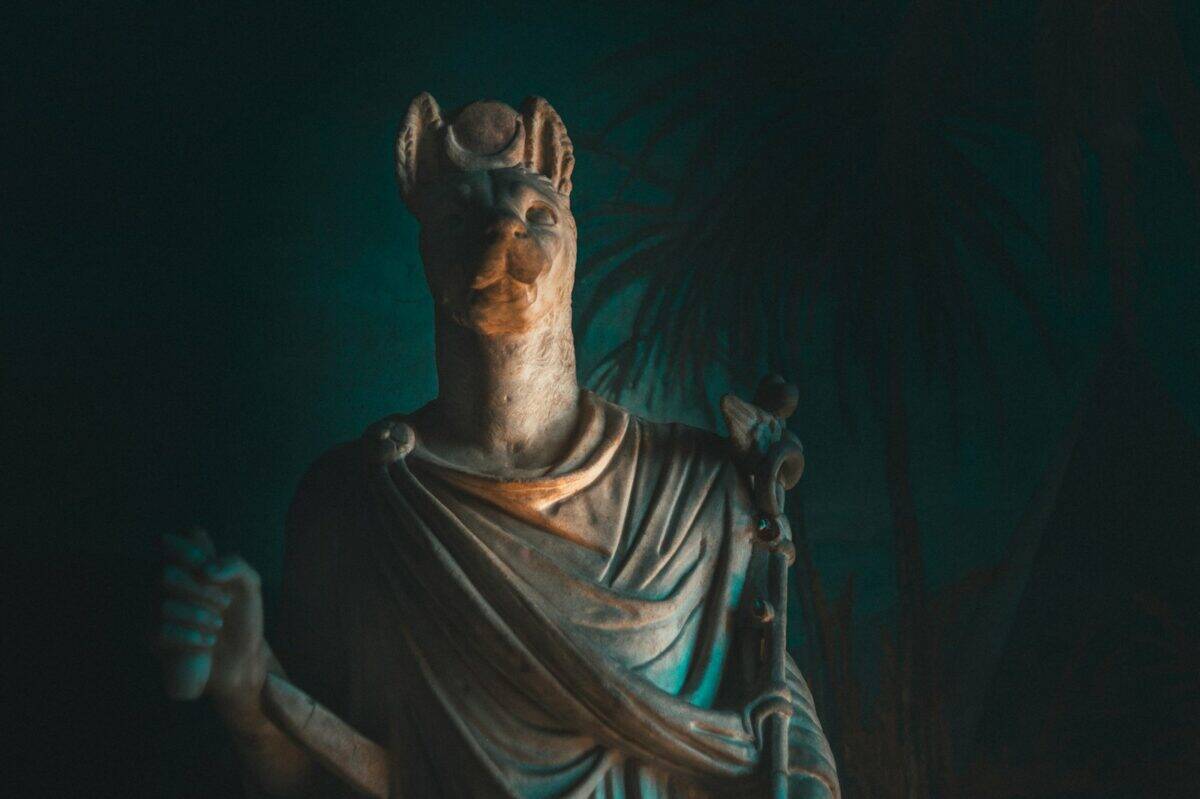
In ancient Egyptian mythology, Anubis—depicted as a man with the head of a jackal or wild dog—served as the guardian of the dead and overseer of mummification rituals. Although technically portrayed with the head of a jackal rather than a domestic dog, Anubis represents one of the most significant canine-associated deities in ancient mythology. His black coat symbolized the fertile soil of the Nile Delta and the regenerative powers of death. As “Opener of the Ways,” Anubis guided souls through the underworld, leading them to the Hall of Truth where their hearts would be weighed against the feather of Ma’at, the goddess of truth and justice.
Anubis’s role evolved throughout Egyptian history, but he remained consistently associated with funerary practices for over three thousand years. His image adorned tomb walls, coffins, and funerary papyri, offering protection to the deceased on their journey through the afterlife. The Egyptians’ choice of a canine deity for this crucial role reflects their observation of jackals’ habits of frequenting desert graves and cemeteries, transforming a potentially frightening association into a protective one. Rather than seeing these animals as desecrators of tombs, the Egyptians reimagined them as guardians, demonstrating how cultural perceptions of dogs shaped their spiritual significance.
Xolotl: The Canine Guide of Aztec Mythology
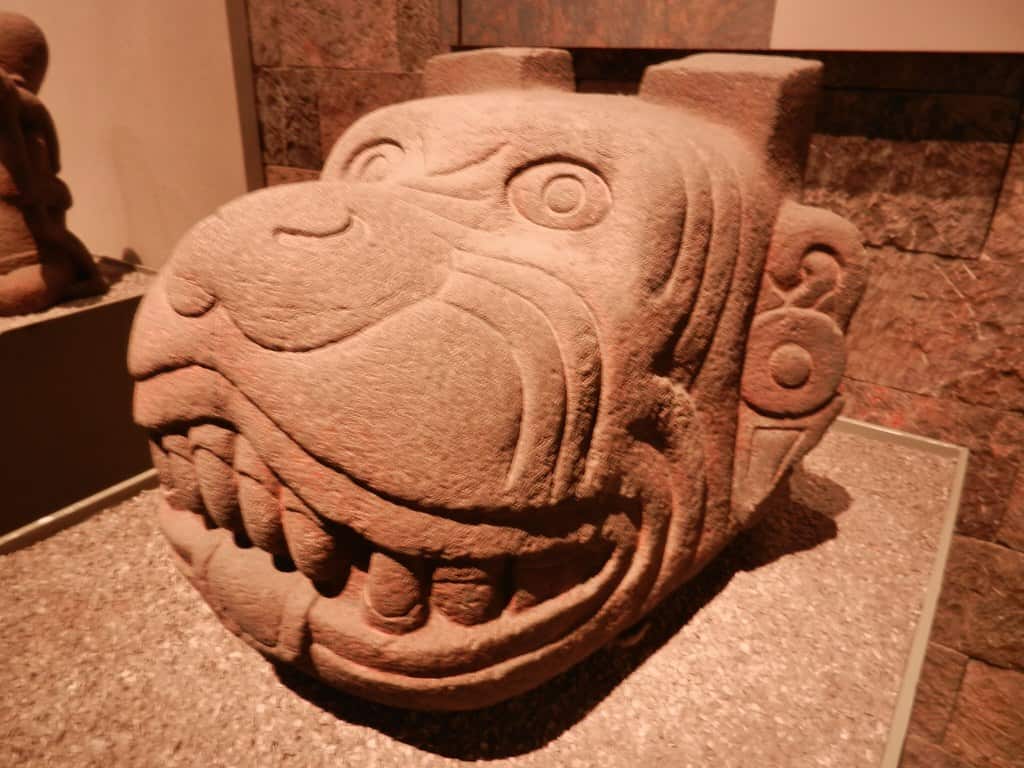
In Mesoamerican mythology, particularly among the Aztecs, the god Xolotl played a pivotal role in escorting the dead to Mictlan, the underworld. Represented as a man with the head of a dog or sometimes as a skeleton-like dog figure, Xolotl was the twin brother of Quetzalcoatl and embodied the evening star, Venus. His name is etymologically connected to the word “xoloitzcuintli,” the native hairless dog breed of Mexico that was often sacrificed and buried with humans to guide their souls through the treacherous nine levels of the underworld.
Archaeological evidence from Mesoamerican burial sites confirms the cultural significance of dogs in funeral practices. Remains of dogs have been found in numerous ancient graves, supporting the textual and artistic evidence of their role as psychopomps—spiritual guides for the deceased. The belief was so ingrained that the Aztecs and Maya would often place clay figurines of dogs in graves when actual dog sacrifices were not possible. The connection between dogs and the afterlife was further reinforced by the belief that Xolotl had created humanity from the bones of previous ages, making him both a creator and a guide through death, illustrating the complex dualities often attributed to canine deities.
Norse Mythology’s Garm: The Howling Sentinel

In Norse mythology, the blood-stained hound Garm (sometimes spelled Garmr) guards the gates of Hel, the realm of the dead ruled by the goddess of the same name. Described in the Poetic Edda as “the greatest monster,” Garm resides at the entrance to a cave called Gnipahellir, where he howls ominously when he senses the coming of Ragnarök, the Norse apocalypse. His fierce bark serves as a warning of impending doom, making him not just a guardian of the afterlife but also a harbinger of cosmic destruction.
During Ragnarök, Garm is fated to break free from his chains and battle with the god Týr, resulting in the death of both. This predetermined fate connects Garm to a larger pattern in Norse mythology where cosmic order ultimately dissolves into chaos. Some scholars have noted similarities between Garm and other mythological figures such as the wolf Fenrir or even Cerberus, suggesting possible cross-cultural influences or universal archetypes. The imposing figure of Garm reflects the Norse conception of death as something wild and potentially dangerous, requiring a fierce guardian to maintain order in the boundary between worlds—a responsibility entrusted to canine figures across many mythological systems.
The Black Dogs of British Folklore
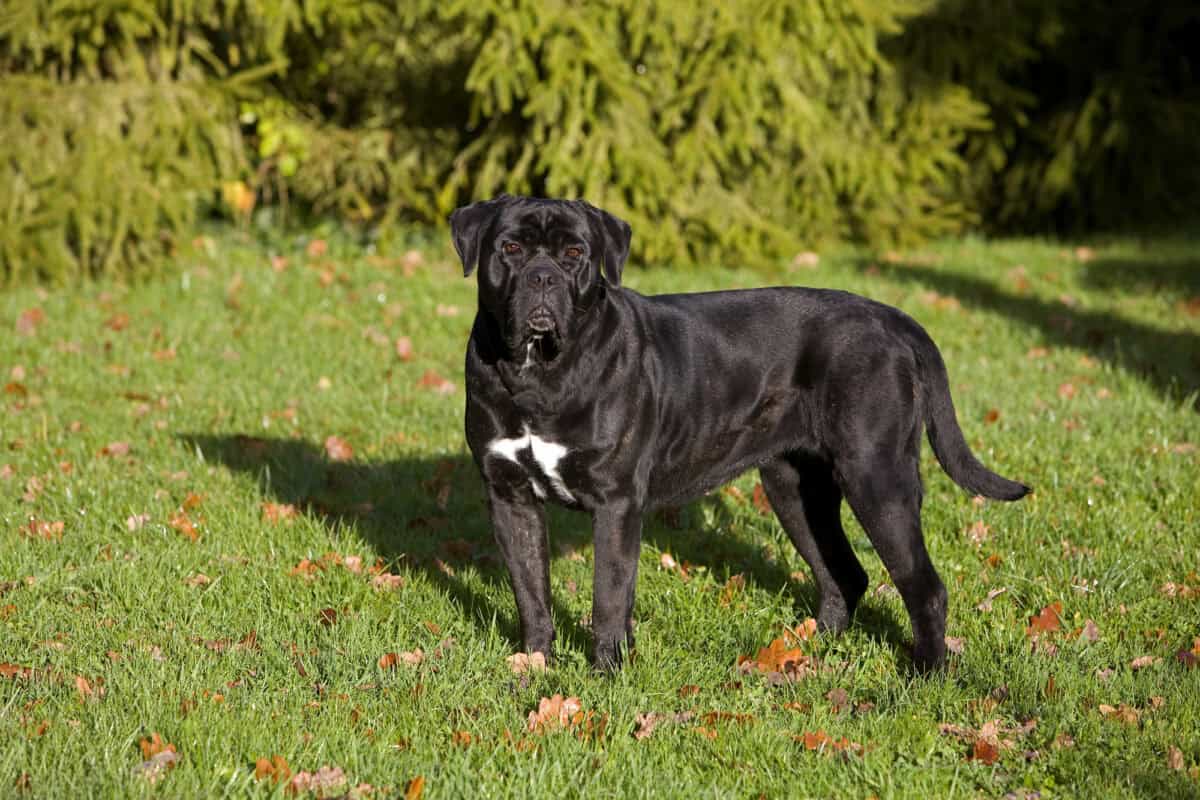
British folklore features numerous accounts of spectral black dogs that haunt crossroads, ancient pathways, and sites associated with death and burial. These supernatural canines, known by regional names such as the Barghest, Black Shuck, Padfoot, or the Grim, are typically described as larger than normal dogs, with glowing red eyes and sometimes phantom chains. Unlike their counterparts in classical mythology who guard fixed entrances to the underworld, these spectral hounds roam the countryside, marking liminal spaces where the boundary between worlds thins.
Encounters with these entities were often considered omens of death, and many local legends tell of travelers who, upon seeing a black dog, died shortly thereafter. However, not all black dog apparitions were malevolent; some were believed to act as protective spirits for travelers on lonely roads or for communities during times of crisis. This ambivalent nature reflects the complex relationship between humans and dogs in British folklore, where canines could be both threatening and protective. The persistence of black dog legends from the medieval period into modern times demonstrates the enduring power of the dog as a symbol of the boundary between life and death in European cultural imagination.
Hinduism’s Yama and His Four-Eyed Hounds
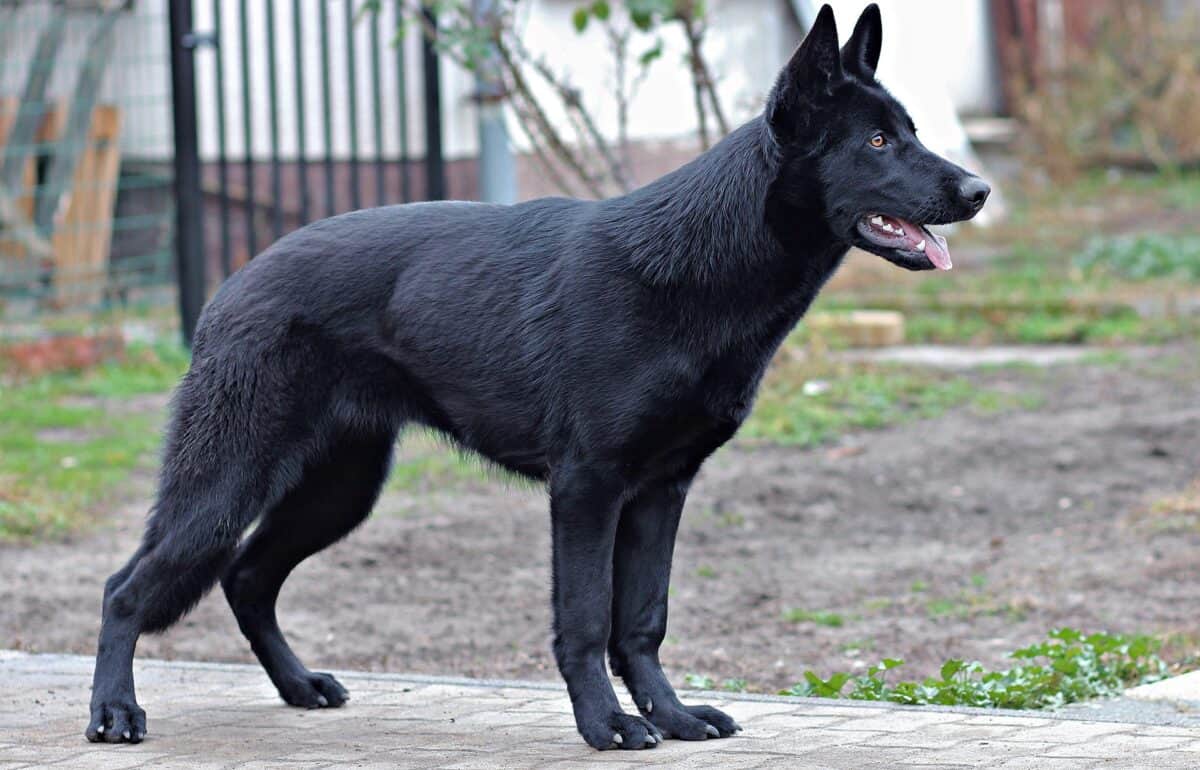
In Hindu mythology, Yama, the god of death and justice, is accompanied by two four-eyed dogs who serve as his messengers and guards. These dogs, named Shyama and Sabala (meaning “black” and “spotted”), are the offspring of Sarama, the divine hound of the gods. They patrol the path to the afterlife and guide worthy souls to Yama’s abode. Their four eyes symbolize their ability to see both this world and the next, making them ideal guardians of the threshold between realms. In the Rig Veda, one of Hinduism’s oldest texts, the dogs are described as “broad-nosed, dark messengers of Yama” who “watch over the conduct of men.”
The association between dogs and death in Hindu tradition has practical as well as mythological dimensions. In some Hindu communities, feeding a black dog during ancestral rites (shraddha) is believed to help the deceased relative in their afterlife journey. This practice acknowledges the dog’s role as an intermediary between worlds. Unlike in some other cultural traditions where dogs might prevent souls from crossing between realms, Yama’s hounds actively facilitate the journey for those who have lived righteously. This benevolent aspect of canine guardianship reflects Hinduism’s complex understanding of death not as an end but as a transition governed by cosmic laws of karma and dharma, with dogs serving as compassionate guides through this process.
Chinese Guardian Lions and Fu Dogs
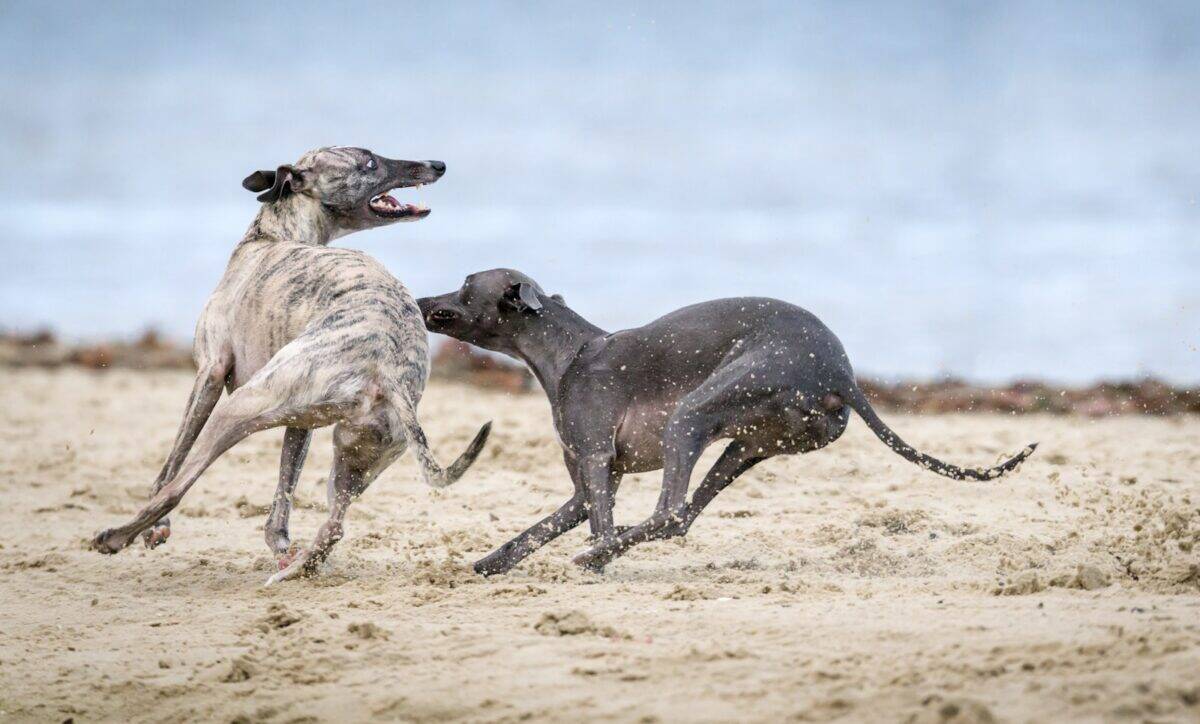
Although not technically dogs but stylized lions, the guardian figures known in the West as “Fu Dogs” or “Foo Dogs” represent an important tradition of protective sentinel creatures in Chinese mythology and art. These imposing statues traditionally stand in pairs at the entrances to temples, palaces, and tombs, guarding against evil spirits and harmful influences. Despite their leonine origins, centuries of artistic evolution have given these guardians distinctly dog-like characteristics in many representations, reflecting the blending of lion imagery with native dog breeds familiar to Chinese artists.
In the context of tombs and ancestral temples, these guardian figures protect not only the physical remains of the deceased but also the boundary between the world of the living and the realm of ancestors. Their placement at entrances reinforces the universal theme of canine-like beings as threshold guardians. Each statue in a pair typically features distinct characteristics: the male holds a ball under his paw, representing global dominion, while the female restrains a playful cub, symbolizing protection of the inhabitants. This dualistic nature mirrors the yin-yang philosophy central to Chinese cosmology, with the guardians maintaining balance between opposing forces—including life and death—at the threshold they protect.
Native American Spirit Dogs and Coyote Tales
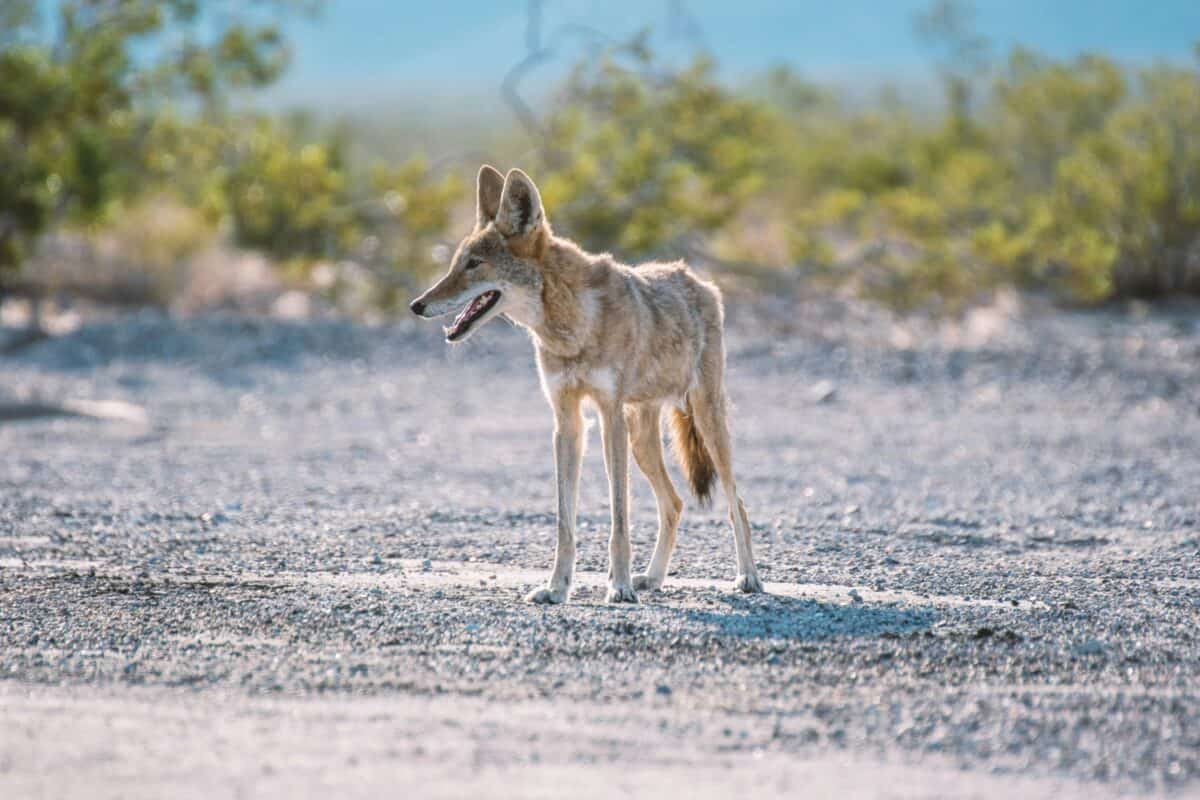
Across various Native American cultures, dogs and their wild relatives play significant roles as psychopomps and spiritual intermediaries. Among the Lakota Sioux, the Milky Way is known as “the path of souls,” where the spirits of the deceased travel accompanied by spirit dogs who guide and protect them. In some traditions, a dog must be sacrificed during funeral rites to ensure the deceased has a companion for this journey. The Navajo traditions speak of the “ghost dog,” a psychopomp that leads souls to the afterlife, while being careful to emphasize that not all dogs serve this function—only specific spirit dogs designated for this purpose.
Coyote, though not a domestic dog, features prominently in many Native American mythologies as a trickster figure who moves freely between the worlds of the living and the dead. His liminal nature makes him both a guide and a disruptor of boundaries. Among the tribes of the Pacific Northwest, including the Salish, dogs were sometimes believed to be able to see spirits invisible to humans, making them early warning systems for supernatural presences. These diverse traditions reflect the complex relationship Native American cultures maintained with canines as both practical companions and spiritual allies, recognizing in them an intuitive connection to realms beyond ordinary human perception—a theme that resonates across global mythologies despite vast cultural differences.
Japan’s Komainu and Spirit Foxes
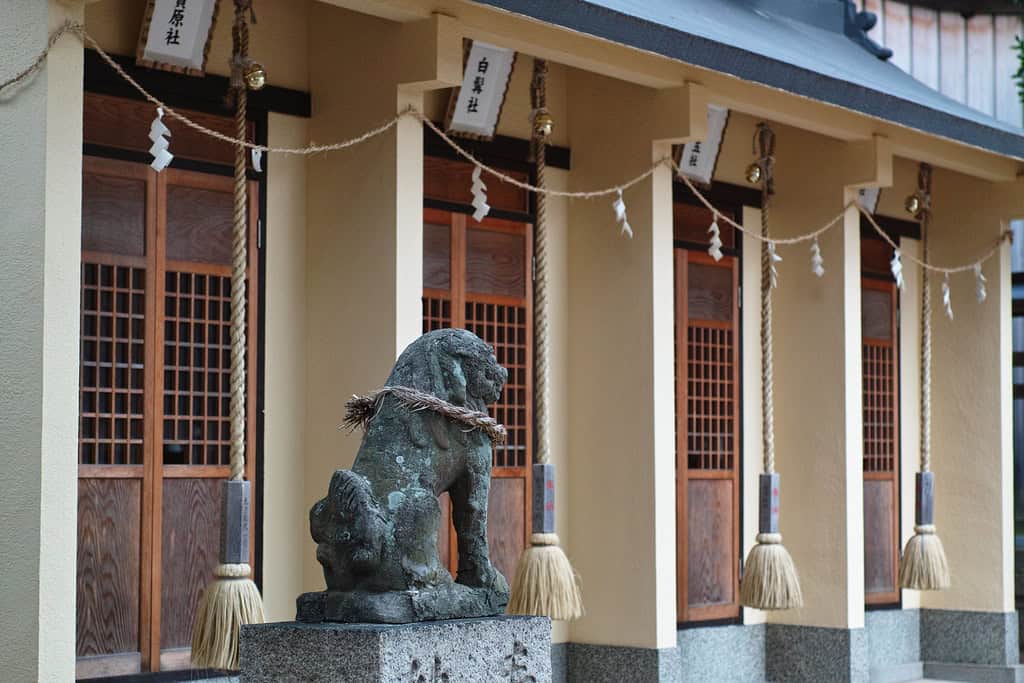
In Japanese mythology and religious practice, pairs of lion-dog guardians called Komainu protect the entrances to Shinto shrines and Buddhist temples. Similar to Chinese guardian lions but with their own distinctive Japanese aesthetic, these creatures have watched over sacred spaces since at least the 8th century CE. Originally imported as Buddhist iconography, they were gradually incorporated into indigenous Shinto practices, demonstrating how dog-like guardian figures transcend specific religious boundaries. At funeral ceremonies and graves, these guardians serve to protect the deceased from evil influences while maintaining the proper separation between the worlds of the living and the dead.
Beyond the Komainu, Japanese folklore features inugami (dog spirits) and kitsune (foxes) that serve as messengers between the human world and the spirit realm. While foxes are not dogs, their canid nature and their prominence in Japanese afterlife beliefs make them relevant to this discussion. Both dog and fox spirits could be either benevolent guardians or dangerous tricksters, depending on how they were treated by humans. This ambivalence reflects the complex relationship between humans and canids in Japanese cultural imagination, where respect for these animals was intertwined with fear of their supernatural powers. The persistence of dog and fox imagery in contemporary Japanese funeral rites and memorial practices demonstrates the enduring significance of canine figures as mediators between life and death.
Celtic Mythology’s Cŵn Annwn and Underworld Hounds
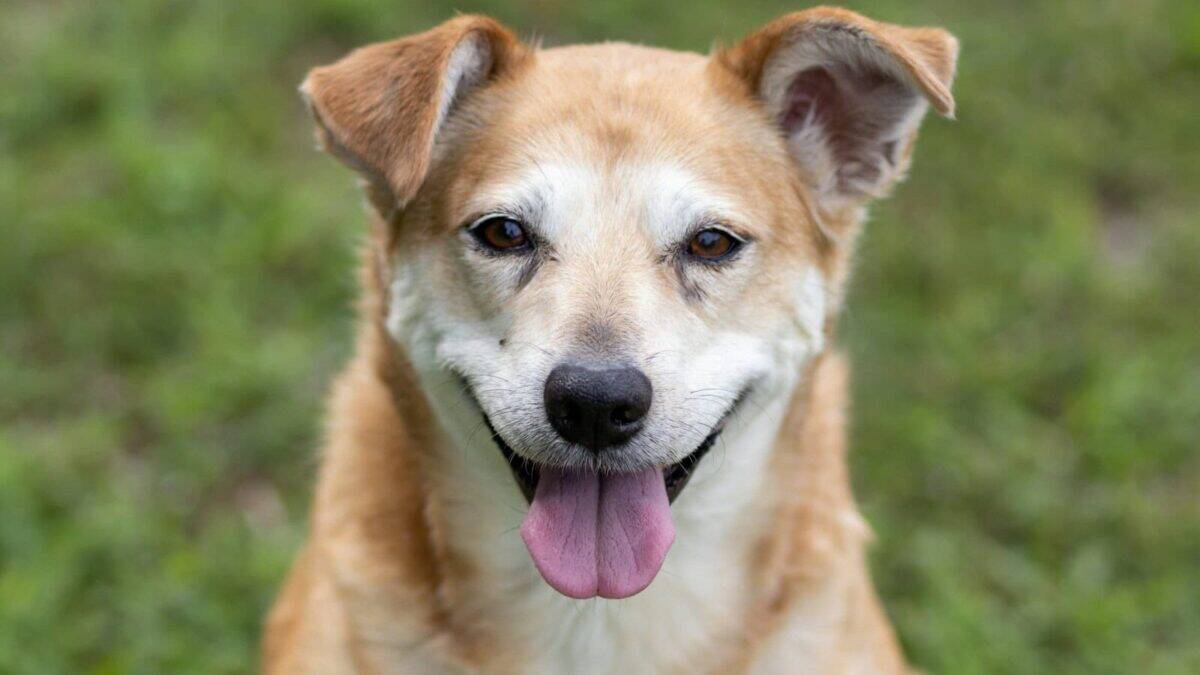
Welsh mythology tells of the Cŵn Annwn (Hounds of Annwn), the spectral dogs belonging to Arawn, king of the otherworld realm of Annwn. These supernatural white hounds with red ears were said to participate in the Wild Hunt, a ghostly procession across the night sky that foretold death and disaster. According to folklore, the closer their howls sounded, the further away they actually were—a disorienting quality that emphasized their otherworldly nature. These hounds were believed to hunt down and punish evil-doers, but they also gathered the souls of the virtuous dead to escort them to the afterlife.
Similar spectral hounds appear across Celtic traditions, including the Irish Cú Sídhe and the Scottish Cù Sìth. In all these variations, the hounds serve as intermediaries between the mortal world and the otherworld, enforcing proper boundaries while also allowing legitimate crossings. Archaeological evidence suggests that dogs held special significance in Celtic funeral practices, with canine remains found in numerous burial sites across Celtic territories. This material evidence aligns with the mythological accounts, suggesting a widespread belief in dogs as appropriate companions and guides for the deceased. The Celtic concept of the afterlife as a parallel world rather than an underworld may explain why their canine guardians were depicted as active hunters rather than stationary sentinels—they needed to traverse landscapes rather than simply guard fixed entrances.
Zoroastrianism’s Bridge Guardian Dog
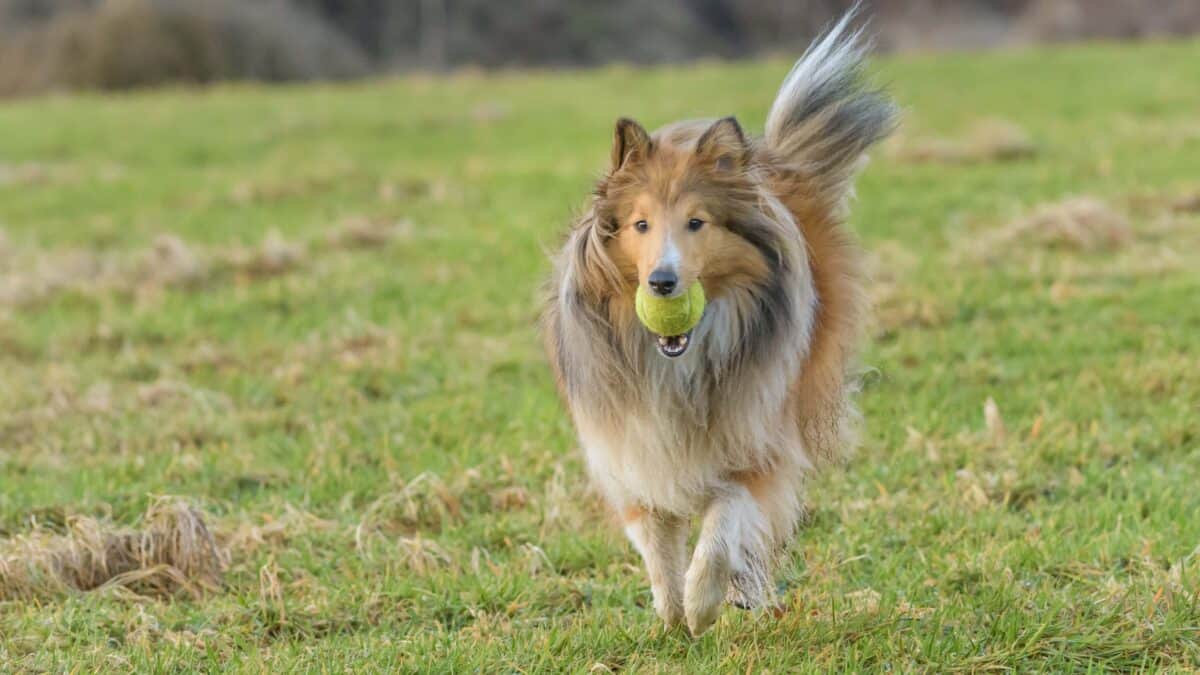
In Zoroastrianism, one of the world’s oldest continuously practiced religions, dogs hold a particularly sacred status both in life and in afterlife mythology. According to Zoroastrian texts, after death, the soul must cross the Chinvat Bridge (the Bridge of Judgment) to reach the other world. A divine dog guards this bridge and helps guide worthy souls across while preventing the passage of the wicked. This four-eyed dog—similar to Yama’s hounds in Hindu tradition—can see in all directions simultaneously, ensuring that no soul can evade judgment. The Vendidad, a Zoroastrian religious text, states that “the dog is a good creature among the creatures of the good spirit that watches over settlements and renders prosperity.”
The importance of dogs in Zoroastrian tradition extends to funeral customs as well. In traditional Zoroastrian practice, a ceremony called Sagdid (“dog’s sight”) was performed in which a dog—preferably one with distinctive eyebrow-like markings—was brought before the deceased. The dog’s gaze was believed to drive away evil spirits and help determine if life had truly left the body. This ceremony reflects the Zoroastrian belief in the dog’s inherent spiritual purity and its ability to perceive spiritual realities invisible to humans. The dog’s dual role as both a guardian against evil and a guide for the righteous in Zoroastrian tradition offers a particularly clear example of how canines were viewed as natural intermediaries between the physical and spiritual worlds in ancient Indo-Iranian religious thought.
The Enduring Legacy of Afterlife Guardian Dogs
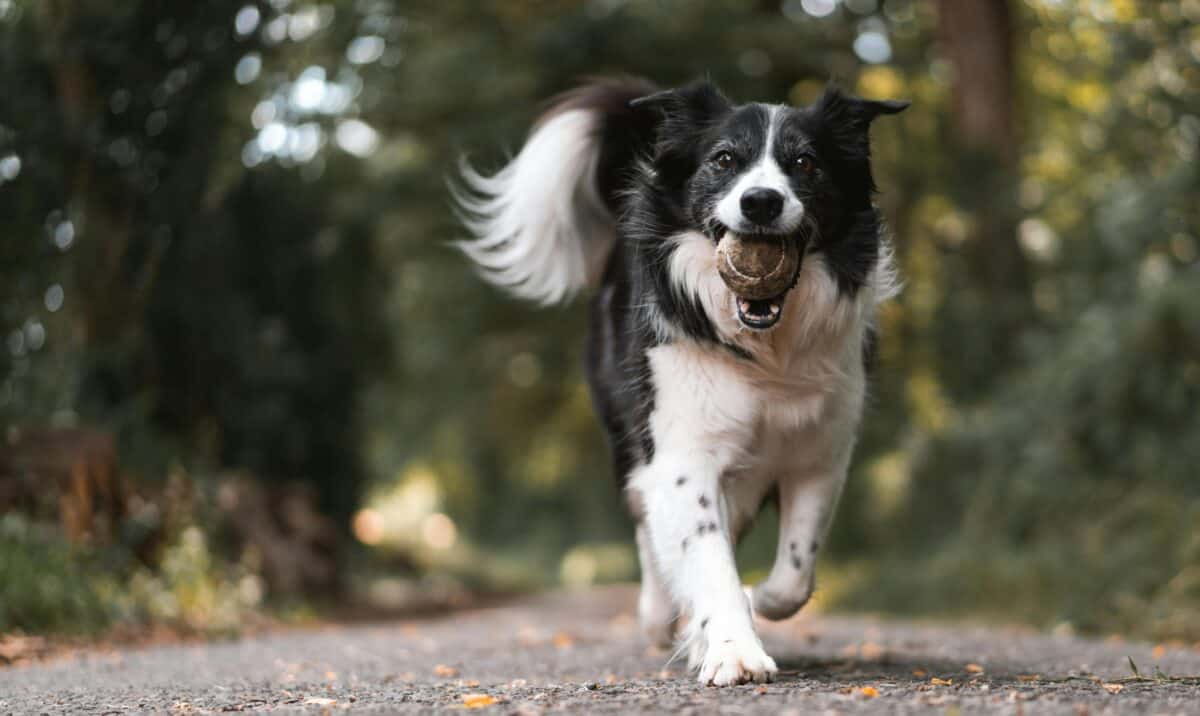
The remarkable consistency with which dogs appear as afterlife guardians across vastly different cultures and time periods speaks to something profound in the human-canine relationship. From Cerberus in ancient Greece to the spectral black dogs of British folklore, these mythological canines share common characteristics: enhanced perception, liminality, loyalty, and discernment. They stand at thresholds, distinguish between the worthy and unworthy, and possess supernatural abilities that enable them to move between worlds. These qualities reflect real-life observations of dogs’ sensory capabilities, territorial behaviors, loyalty, and seemingly intuitive understanding of human emotions.
- How Penguins Take Turns at Sea and Nest to Raise Chicks - August 9, 2025
- Dolphin Brains Compare to Those of Apes and Humans - August 9, 2025
- 14 Cutting-Edge Biotech Innovations That Will Shape the Future - August 9, 2025
